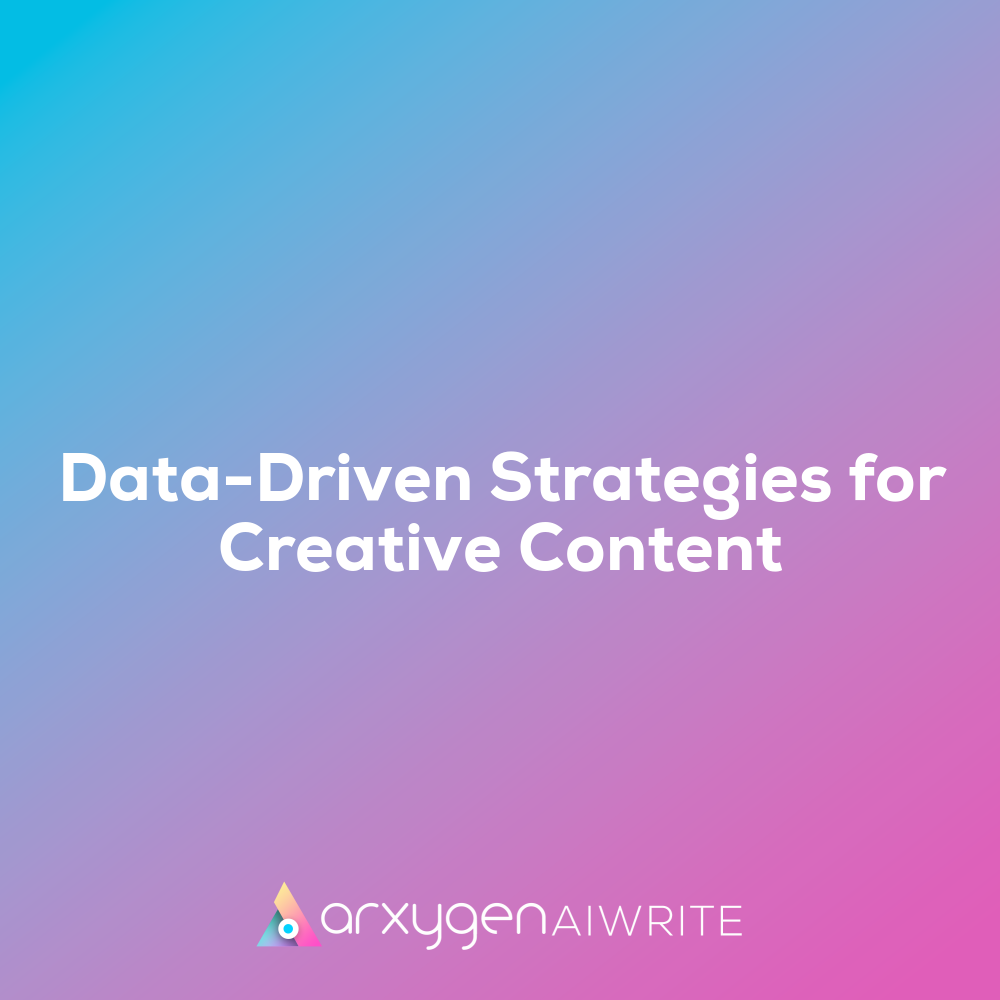Exploring the Significance of Data-Driven Content Strategies in Modern Marketing
Data-driven content strategies are pivotal in today’s marketing landscape, as they allow brands to craft tailored messages that resonate with their target audiences. By harnessing data analytics, marketers can gain insights into consumer behaviours, preferences, and trends, which inform the creation of compelling content. This approach not only enhances the relevance of marketing efforts but also increases the likelihood of audience engagement. Imagine a campaign where every piece of content is informed by real-time data; such a strategy ensures that creative decisions are not based on guesswork but on tangible evidence.
Furthermore, understanding which topics captivate an audience can lead to more effective storytelling. For instance, analysing engagement metrics might reveal that your audience responds better to visual content rather than text-heavy articles. By pivoting your strategy based on these insights, you can elevate the quality of your content and foster deeper connections with your readers. Additionally, A/B testing different formats can unveil what truly resonates, allowing for continuous improvement and innovation.
Leveraging Analytics for Enhanced Audience Engagement
The integration of data analytics into creative processes empowers brands to refine their messaging and delivery methods. By monitoring user interactions across various platforms, marketers can identify the most impactful channels for distribution. This ensures that the right content reaches the right people at precisely the right moment. Moreover, utilising tools that track user behaviour enables brands to personalise experiences, making each interaction feel unique and tailored.
Ultimately, embracing a data-driven approach not only enhances creativity but also drives measurable results. Brands that leverage analytics effectively are better positioned to adapt to changing consumer landscapes and preferences. As a result, they can cultivate loyalty and trust among their audiences while achieving their marketing objectives.
Utilising Data Analytics to Drive Creative Content Strategies
In the ever-evolving landscape of digital marketing, understanding content performance is paramount. Tools such as Google Analytics and social media insights provide invaluable data that can shape creative strategies. By analysing metrics like engagement rates and audience demographics, marketers can uncover patterns that inform their content direction. For instance, A/B testing different headlines or visuals allows teams to determine what resonates best with their audience.
“The intersection of analytics and creativity is where true success lies in today’s competitive market.”
Platforms like BuzzSumo enable creators to explore trending topics and gauge the success of similar campaigns. This data-driven approach has proven successful for various brands; one notable example is a global beverage company that revamped its advertising strategy based on social media analytics. By identifying peak engagement times and popular themes, they crafted targeted campaigns that resulted in a 30% increase in brand interaction.
Additionally, leveraging customer feedback through surveys and online reviews provides qualitative insights that complement quantitative data. A fashion retailer once utilised this method to refine their product offerings, leading to a significant boost in sales after implementing changes based on customer preferences. Such case studies illustrate the power of data in guiding creative decisions.
Transforming Insights into Actionable Strategies
Employing tools like heatmaps can visually represent user behaviour on websites, revealing which areas capture attention and which are overlooked. This information can be instrumental in optimising content layout for better user experience. A tech startup implemented heatmap analysis to adjust their landing page, resulting in a dramatic increase in conversion rates.
Ultimately, the fusion of creativity and data analytics not only enhances content effectiveness but also fosters innovation. By embracing these techniques, brands can create compelling narratives that resonate with their target audience while driving measurable results. The intersection of analytics and creativity is where true success lies in today’s competitive market.
Optimising Content Creation Through Data-Driven Practices
In the realm of digital content, the mantra of ‘test, learn, and adapt’ holds immense significance. Continuous testing and iteration based on data feedback not only refine strategies but also cultivate a deeper understanding of audience preferences. For instance, a blog that regularly analyses reader engagement metrics can identify which topics resonate most, allowing creators to pivot their focus accordingly. This iterative process transforms content from a static offering into a dynamic conversation with its audience.
To effectively integrate data analysis into content creation workflows, start by establishing clear objectives for each piece of content. Use analytics tools to monitor performance indicators such as click-through rates and social shares. Additionally, consider implementing A/B testing for headlines or visuals to gauge what captures attention best. It’s crucial to foster a culture where feedback is valued; team members should feel empowered to share insights derived from data analysis. By weaving these actionable steps into daily operations, content creators can harness the power of data to elevate their work and drive engagement.
Transforming Insights into Actionable Strategies
Leveraging audience segmentation allows for tailored content that speaks directly to specific groups, enhancing relevance and connection. As you evolve your approach, remember that data-driven strategies are not just about numbers; they are about storytelling informed by insights. Embrace the journey of experimentation, knowing that every piece of feedback is a stepping stone towards creative success.

